Going to Kansas City.
Kansas City, here I come.
They got some crazy little women there
and I'm a-gonna get me one.
Jerry Lieber and Mike Stoller wrote that tune back in the 1950s, and it's been recorded by a lot of people. It hit Number 1 for Wilbert Harrison in 1959. They were referring to the larger Kansas City, Missouri (a.k.a. "KCMO,") not the smaller Kansas City, Kansas (a.k.a. "KCK").
The song doesn't say anything about sports, though. Even if it had, in 1959 in America, the sport it would have mentioned wouldn't have been soccer. But SKC are one of MLS' better programs.
Before You Go. K.C. can get really hot in the summer, and really cold in the winter, with the wind blowing across the Plains. This will be early March so it could be considerably warmer than New York and New Jersey. Check the Kansas City Star website for the weather forecast before you go. (The rival Kansas City Times stopped publishing in 1990.)
For the moment, they are predicting that temperatures on Sunday afternoon will be in the low 60s, and will drop to the low 40s at night. Bring a jacket.
Kansas City is in the Central Time Zone, 1 hour behind New York. Adjust your timepieces accordingly.
Tickets. SKC averaged 19,537 fans per home game last season, a sellout. Tickets may be hard to come by. But, being that this is soccer, there is a section set aside for away supporters, and some may still be available.
Away fans sit in Section 124, in the southern corner -- or, if you prefer, the bottom right corner of the horseshoe. Tickets are $44.
Getting There. Kansas City's Crown Center is 1,194 road miles from New York's Times Square. Children's Mercy Park is 1,196 miles from Red Bull Arena. Knowing this, your first reaction is going to be to fly out there.
A round-trip nonstop ticket from Newark Liberty to Mid-Continent International Airport, while changing planes in Chicago, can be just $659. When you get there, the 129 bus takes you to downtown in under an hour, so that's convenient.
Bus? Not a good idea. Greyhound runs 6 buses a day between Port Authority and Kansas City, and only 2 of them are without changes in Pennsylvania (possibly in Philadelphia, possibly in Harrisburg). The total time is about 29 hours, and costs $420 round-trip, although it can drop to $349 with advanced purchase. The Greyhound terminal is at 1101 Troost Avenue, at E. 11th Street. Number 25 bus to downtown.
Train? Amtrak will make you change trains in Chicago, from their Union Station to K.C. on the Southwest Chief – the modern version of the Santa Fe Railroad's Chicago-to-Los Angeles Super Chief, the train that, along with his Cherokee heritage, gave 1950s Yankee pitcher Allie Reynolds his nickname.
Problem is, you would need to leave New York on the Lake Shore Limited at 3:40 PM Eastern Time on Friday, getting to Union Station in Chicago at 9:45 AM Central Time on Saturday, switching to the Southwest Chief at 3:00 PM, arriving in K.C. at 10:11 PM Saturday night. But it's not particularly expensive by Amtrak standards: It's a round-trip fare of $385 -- possibly cheaper than the bus. Union Station is at Pershing Road and Main Street. Take the MAX bus to get downtown.
Union Station in Kansas City. This city has a fountain fetish.
If you decide to drive, it's far enough that it will help to get someone to go with you and split the duties, and to trade off driving and sleeping. You'll need to get on the New Jersey Turnpike, and take Interstate 78 West across New Jersey, and at Harrisburg get on the Pennsylvania Turnpike, which at this point will be both I-70 and I-76. When the two Interstates split outside Pittsburgh, stay on I-70 west.
You'll cross the northern tip of West Virginia, and go all the way across Ohio (through Columbus), Indiana (through Indianapolis), Illinois and very nearly Missouri (through the northern suburbs of St. Louis). You'll begin the Missouri section in St. Louis, on the Stan Musial Memorial Bridge; and end it in Kansas City, on the George Brett Super Highway. (The St. Louis portion of I-70 had been the Mark McGwire Highway, but after the steroid revelations, it was renamed the Mark Twain Highway.)
Exit 2C is for downtown, but it might be cheaper for you to get a hotel on the Kansas side. Continue West on I-70. Exit 411B will be for the stadium, onto Interstate 435. The 1st exit you see will be Exit 13B, and that's the exit for the stadium.
If you do it right, you should spend about an hour and 15 minutes in New Jersey, 5 hours in Pennsylvania, 15 minutes in West Virginia, 3 hours and 45 minutes in Ohio, 2 hours and 30 minutes in Indiana, 2 hours and 30 minutes in Illinois, and 4 hours and 15 minutes in Missouri before you reach the exit for your hotel. If you keep going into Kansas for a hotel, add another half-hour. That's going to be nearly 20 hours. Counting rest stops, preferably 7 of them, and accounting for traffic in both New York and Kansas City, it should be about 28 hours.
Once In the City. Kansas City, founded in 1838, and named for the Kanza tribe of Native Americans who lived there, is one of the smallest cities in North American major league sports, with just 480,000 people, and one of the smallest metropolitan areas, with 2.4 million.
Kansas City is set on the confluence of the Missouri and Kansas rivers, and on the Missouri/Kansas State Line. Kansas City, Kansas is a separate city with about 150,000 people, and is known locally as KCK, while the more familiar city is KCMO. As for KCMO, Main Street runs north-south and divides Kansas City addresses between East and West, while the north-south addresses start at 1 at the Missouri River. The metro area does not have a "beltway."
The base fare for buses and light rail is $1.50, though to go to the Missouri suburbs or KCK it's doubled to $3.00. A 3-day pass is $10. The sales tax in Missouri is 4.225 percent, but it more than doubles to 8.475 within KCMO. The sales tax in Kansas is 6.5 percent.
ZIP Codes for the Missouri side of the Kansas City area start with the digits 640 and 641; and for the Kansas side, 660 and 661. The Area Codes are 816 in Missouri, 913 in Kansas. Kansas City Power & Light Company (KCP&L) runs the electricity.
KCMO is about 55 percent white, 30 percent black, 10 percent Hispanic and 3 percent Asian. KCK is more balanced: About 40 percent white, 28 percent Hispanic, 27 percent black and 3 percent Asian. Strangely, the State Line flips the housing segregation: On the Missouri side to the east, it's white on the North Side, black on the South; but on the Kansas side to the west, it's minorities on the North Side, and white on the South.
The Missouri State House,
on the Missouri River in Jefferson City
The Kansas State Capitol is in Topeka, 64 miles west of downtown KCMO, 50 miles west of Children's Mercy Park, 26 miles west of the University of Kansas campus in Lawrence, 60 miles southeast of the Kansas State University campus in Manhattan (sure doesn't look like the one in New York), and 140 miles northeast of Kansas' largest city, Wichita.
The Kansas State House, in Topeka
Going In. Opening in 2011 as Livestrong Sporting Park, and known as simply Sporting Park after the fall of Lance Armstrong in 2013, since 2015 the home of Sporting Kansas City has been named Children's Mercy Park, with the naming rights bought by a nearby hospital.
It is 16 miles west of downtown KCMO, and 11 miles west of downtown KCK. The official address is 1 Sporting Way (usually written as "One Sporting Way"). It is across the State Line in Kansas City, Kansas. This makes SKC the only major league sports team that the State of Kansas has ever had -- if you count MLS as "major league," and, since it had now celebrated its 20th Anniversary, you should.
Seating 18,467, the stadium is at State Aveune & France Family Drive (named for the family that founded and still runs NASCAR). CommunityAmerica Ballpark, home for the independent baseball team the Kansas City T-Bones (and home to SKC, then the Wizards, from 2008 to 2010), the Kansas Speedway racetrack, and the Legends Shopping Mall (yet another place in the KC area with a fountain fetish) are all adjacent.
From downtown, take the Number 37X bus, transferring to the Number 101 bus on Wyandotte Street at 7th Street. If you drive in, parking is free. Yes, free! As with the Royals and especially the Chiefs, tailgating is encouraged.
The field is natural grass, and is aligned northeast-to-southwest. SKC used to share it with FC Kansas City, which won the 2015 and 2016 National Women's Soccer League titles, but they've moved to Salt Lake City. Locals call the stadium "The Blue Hell," and, as with Red Bull Arena and Yankee Stadium, the color blue does dominate.
The view from Section 123, where away supporters sit
The U.S. national soccer team has played 4 games there: A 1-0 win over Guadeloupe on June 14, 2011; a 3-1 win over Guatemala on October 16, 2012; a 2-0 win over Jamaica on October 11, 2013; a 1-1 draw with Panama on July 13, 2015, in the Group Stage of the CONCACAF Gold Cup; and a 4-0 win over Bolivia in the Copa America on May 28, 2016.
It hosted the 2013 MLS Cup Final, in which SKC beat Real Salt Lake on penalties in frigid conditions: The game began at 22 degrees, 12 with the wind chill factor, and got colder as night fell. This hosting made it the only stadium that has ever hosted an MLS Cup Final, an MLS All-Star Game, and a USMNT game in the same calendar year.
Food. Kansas City has a reputation for great steaks and great barbecue, and CMP reflects this. Guy's BBQ is at Section 134. Kansas City Steak is at 118, featuring "Kansas City Steak Ribeye Sandwich," "Ultimate Kansas City Steak Chips" (I'm presuming that's a form of French fries), and "Kansas City Steak Beef Jerky."
Sporting Fare, with hot dogs and other sausages, is at 101 and 127. The Grill, with burgers and fries, is at 114 and 129. The Tap serves "gourmet pretzels" (you could get shot in Philadelphia for trying to sell a pretzel as "gourmet") and a chicken and waffle sandwich (I thought that abomination was limited to the Columbus Crew's stadium) at 117. Also at 117 is The Big Cheese, which serves various varieties of grilled cheese sandwiches, and also the traditional complement to grilled cheese, tomato soup.
Champion Chips sells nachos and "Street Tacos" at 119. Also at 119 is Crafty Dogs, where you can "Build Your Own Dog." Wok This Way sells rice bowls at 120. Fresh Market sells fruit, vegetables, triple-decker peanut butter & jelly sandwiches, Rice Krispies and "Giant Cupcake" at 123.
Aladdin Cafe sells Middle Eastern food at 130 (bet that doesn't exactly sit well with all those Kansas and Missouri Tea Partiers). State Line Fare serves "State Fair" type food (Corn dogs, funnel fries, cotton candy, etc.) at 134. Finally, there's a Papa Johns Pizza stand at 112, but screw Papa John until he dips into his billions and pays for his employees' health care.
Team History Displays. SKC won the MLS Cup in 2000 (beating the Chicago Fire in the Final) and 2013 (beating Real Salt Lake on penalties in the Final, on home soil). They lost the Final in 2004 (to the D.C. Scum). They also won the Supporters' Shield in 2000, and the U.S. Open Cup in 2004, 2012, 2015 and 2017 (beating the Red Bulls in the Final). The north wall has a display for these honors. When they win another, the ultras' tradition is "Paint the Wall," before the club can officially add it.
Photo taken after the 2015 Open Cup win
* Lamar Hunt, League and team founder, also founder of the AFL and founding owner of the NFL's Kansas City Chiefs, and the man for whom the U.S. Open Cup is now named.
* Bob Gansler, manager of their 2000 MLS Cup winners.
* Tony Meola, Number 1, goalkeeper and native of Kearny, New Jersey, who played for the Red Bulls in 1996, '97 and '98 as the MetroStars; and in 2005 and '06 under the new name. He also played at the Prudential Center for the New Jersey Ironmen in 2007 and '08.
* Peter Vermes, Number 6, defender and native of Willingboro, New Jersey, Rutgers University graduate, played for the Paterson-based New Jersey Eagles in 1988, and was an original MetroStar in 1996. He has managed SKC since 2009, and has won the MLS Cup with them as both a player and a manager (2000 and 2013, respectively).
* Predrag Radosavljević , Number 11, the Serbian midfielder better known as Preki, the club's all-time leader in goals and assists. A member of their 2000 MLS Cup winners.
* Jimmy Conrad, Number 12, defender. A member of their 2004 team that won the U.S. Open Cup and reached the MLS Cup Final.
* Chris Klein, Number 17, midfielder. The Captain of their 2000 MLS Cup winners and their 2004 U.S. Open Cup winners.
There appears to be no commemoration for these players in the fan-viewable parts of the stadium.
A video tribute to Lamar Hunt
Perhaps the greatest legend to play for the club -- if not the player with the greatest performances at the club -- is Maurice "Mo" Johnston, a striker who closed his career with the then-Wizards from 1996 to 2001. The Scot starred at Patrick Thistle in Glasgow, Watford outside London, back in Glasgow with Celtic, and then in France with Nantes, before Glasgow's Rangers signed him in 1989 -- the 1st Catholic player in the club's modern era (though not quite their 1st ever).
The club's Protestant fan base, despising Catholics, especially those who played for Celtic, played up to their image as Britain's most bigoted club, booing him at every opportunity and even sending him death threats. He lasted 2 years before moving on to Liverpool's Everton, Edinburgh's Heart of Midlothian (another club with a mostly-Protestant fan base, but they treated him well), and Falkirk before coming to Kansas City. Fans on both sides of the Old Firm hate him now, but Kansas City fans love him.
Compared to what he faced at Ibrox,
wearing this horrid kit at Arrowhead was a breeze.
Stuff. The Sporting Style stores are located near Sections 114 and 131, and Scarf Bars at 101 and 122. Yes, "scarf bars." Does that mean that if you put one around your neck, you can absorb alcohol through your skin?
The sports staff of The Kansas City Star published the commemorative book We Love Ya! Sporting Kansas City -- 2013 MLS Champions. Defender Matt Besler, a native of nearby Overland Park, Kansas who has spent his entire pro career with SKC, has written No Other Home: Living, Leading and Learning What Matters Most.
However, as far as I can tell, there is no commemorative video for either of the team's MLS Cup wins, or for their 20th Anniversary.
During the Game. Because of their Great Plains/Heartland image, Kansas City fans like a "family atmosphere." Yeah, let them say that with a straight face when they play the Chicago Fire, or the Colorado Rapids, or FC Dallas. But they have no special distaste for either of the New York teams. So they will not directly antagonize you. At least, they won't initiate it. But don't call them rednecks, hicks or sheep-shaggers.
SKC hold auditions for National Anthem singers, instead of having a regular. The club's mascot is Blue, a 7-foot gray dog in a blue uniform. (Maybe he should've been named Gray.)
The main supporters group of Sporting Kansas City cheers in the Members' Stand, on the North side of Children's Mercy Park, known as The Cauldron. The name is derived from the large metal pots used for boiling potions, due to the team's former name of the Kansas City Wizards. That name was never popular, and after an attempt to rename them the Bees, since the bee is the State Insect of both Missouri and Kansas, the European-sounding name "Sporting Kansas City" was chosen in 2011.
Current groups in the north stands along with The Cauldron include La Barra KC, the Brookside Elite, the Mass Street Mob, the King City Yardbirds, the Trenches, the Omaha Boys, the Northland Noise, the Ladies of SKC, and the K.C. Futbol Misfits.
The South Stand SC cheers from the south end of Children's Mercy Park, and is the umbrella group for The Wedge and Ad Astra SKC, while the Kansas City Chapter of the American Outlaws, the fan club for the men's and women's national teams, is also present in the stands.
Their songs include the variation on Little Peggy March's "I Will Follow Him" ("We love ya, and where you go we'll follow"), a variation on Chelsea FC's "Carefree" ("We are the famous SKC"), and some songs that still include the old nickname of "Wiz" for Wizards. One, to the tune of "The Battle Hymn of the Republic," goes:
Sporting, Sporting Kansas City
Sporting, Sporting Kansas City
Sporting, Sporting Kansas City
as the Wiz go marching on on on!
A sign taunting Seattle Sounders fans
about the 2008 loss of the NBA's SuperSonics.
After the Game. Since the stadium is not in any neighborhood, let alone a bad one, you should be safe after a game, day or night. As I said, leave the home fans alone, and they'll probably leave you alone.
This being the suburbs, there are loads of chain restaurants near the stadium. In a shopping center to the west, between the stadium and the minor-league ballpark, there's an Applebee's, a Chili's, a Sonic, a Hooters, a LongHorn Steakhouse, and an outlet of the legendary Kansas City barbecue restaurant Arthur Bryant's. Across Village Parkway from that shopping center, there's a McDonald's, a Panera, a Chipotle, and some lesser-known (possibly regional) chains. To the east, across France Family Drive, there's a Lone Star Steakhouse and a Famous Dave's.
Chappell's Restaurant & Sports Museum, not really a museum but with a huge memorabilia collection, has been called the best sports bar in the Kansas City area. 323 Armour Rd., at Erie St, 11 miles northeast of the sports complex, and 5 miles north of downtown.
If you want to be around other New Yorkers, Johnny's Tavern, 1310 Grand Blvd., downtown, across from the Sprint Center (the new arena), is known as a Giants fan's bar. Be advised that it is also known as a Sporting KC bar -- and a USMNT bar, and a University of Kansas bar. Drivers Sports Cafe is also cited as a Giants fan bar. 8220 Metcalf Avenue in Overland Park, Kansas, 12 miles south of downtown KCMO, and 18 miles southeast of Children's Mercy Park. Reachable by public transit, but not easily.
If your visit to Kansas City is during the European soccer season, which is now approaching its climax, you can watch your favorite club at the following locations, which are in KCMO unless otherwise stated:
* Arsenal: The aforementioned Johnny's Tavern.
* Chelsea and Liverpool: The Dubliner, 170 E. 14th Street. Like Johnny's, across from the Sprint Center.
* Everton: District Pour House, 7122 Wornall Road. MAX bus to Wornall & Gregory.
* Manchester United: Quinton's Waldo Bar, 7438 Warnall Road, 3 blocks from District Pour House.
* Tottenham Hotspur: Strange Days Brewing Co., 316 Oak Street. Bus 77 to 3rd & Grand.
* Bayern Munich: Kansas City Bier Company (a.k.a. KC Bier), 310 W. 79th Street. MAX bus to Broadway & 74th, then walk 7 blocks south.
If your team isn't listed here, your best bet may be No Other Pub, 1370 Grand Blvd., also across from the Sprint Center.
Sidelights. Kansas City's sports history is a bit uneven. When the Royals and Chiefs have been good, they've been exceptional. But they've also had long stretches of mediocrity. Still, there are some local sites worth checking out.
The Harry S Truman Sports Complex, including Kauffman Stadium (known as Royals Stadium from 1973 until the 1993 death of founder-owner-pharmaceutical titan Ewing M. Kauffman) and Arrowhead Stadium, home of the NFL's Kansas City Chiefs and site of a 2001 U.S. soccer team win over Costa Rica, is 8 miles southeast of downtown Kansas City, at the intersection of Interstates 70 and 435, still in the city but on the suburban edge of it.
Top: Arrowhead Stadium. Bottom: Kauffman Stadium.
The official address of Arrowhead Stadium is 1 Arrowhead Way, and that of Kauffman Stadium is 1 Royal Way. Public transportation is not much of an option. In fact, aside from Arlington, Texas, this is one of the least friendly stadiums in MLB and the NFL for those without a car. The Number 28 bus will drop you off at 35th Street South and Blue Ridge Cutoff, and then it's a one-mile walk down the Cutoff, over I-70, to the ballpark. The Number 47 bus will drop you off a little closer, on the Cutoff at 40th Terrace, about half a mile away.
Arrowhead has hosted the Big 12 Conference football championship game 5 times, most recently in 2008. The "Border Showdown" between the universities of Kansas and Missouri, the oldest college football rivalry west of the Mississippi River, was played at Arrowhead from 2006 to 2011, when Missouri left the Big 12 for the Southeastern Conference.
They are not scheduled to play each other in football this year or next year, and as far as I know, there are no plans to revive the rivalry in 2019 or later. But such rivalries never stay dormant for long, and if the Big 12 continues to fall apart (they're now at 10 teams, as they've lost Missouri and Texas A&M to the SEC, Nebraska to the Big 10 and Colorado to the Pac-10/12, but have also gained West Virginia from the Big East and Texas Christian from the Western Athletic Conference), it wouldn't be outrageous to see Kansas in the SEC in the foreseeable future.
As Chiefs founder-owner Lamar Hunt was one of the main movers and shakers of American soccer -- the American equivalent of England's FA Cup is officially named the Lamar Hunt U.S. Open Cup -- he helped to found MLS, and the Kansas City Wizards began play at Arrowhead in 1996. They won the MLS Cup in 2000. But the Hunt family sold that team in 2007, and, under the name Sporting Kansas City, it now plays across the State Line in Kansas City, Kansas. Still using the Wizards name in 2010, they played a preseason friendly against Manchester United at Arrowhead, and won 2-1.
Arrowhead Stadium, set up for soccer
It has been selected by the U.S. Soccer Federation as a finalist to be one of the host venues for the 2026 World Cup.
* Site of Municipal Stadium. This single-decked, 17,000-seat ballpark was built as Muehlebach Field in 1923, by George Muehlebach, who also owned the beer and the hotel that bore his name, and the American Association's Kansas City Blues. It hosted the Blues' Pennants in 1929, 1938, 1952 and 1953 – the last 3 as a farm club of the Yankees. (They'd previously won Pennants in 1888, 1890, 1898 and 1901, for a total of 8 Pennants -- or 5 more than the A's and Royals combined in nearly 60 years thus far.) Future Yankee legends Phil Rizzuto (Sporting News Minor League Player of the Year in 1940) and Mickey Mantle (1951) played for this club at this ballpark.
The Kansas City Monarchs of the Negro Leagues also played at Muehlebach, renamed Ruppert Stadium for the Yankees' owner in 1937 and Blues Stadium in 1943. They won 13 Pennants there from 1923 to 1955, including 3 straight, 1923-25, and 4 straight, 1939-42.
Hall-of-Famers Satchel Paige, Willard Brown and Hilton Smith were their biggest stars, although it should be noted that, while he played with them in the 1945 season, Jackie Robinson was, at the time, not considered as much of a baseball prospect some of the other players who were thought of as potential "first black players," like Paige, Monte Irvin and Larry Doby; it was his balance of competitiveness and temperament, as much as his talent, that got Brooklyn Dodgers president Branch Rickey interested in him. And in a travesty, Monarchs legend Buck O'Neil has never been elected to the Hall of Fame. The Monarchs had to leave after the 1955 season, because of the arrival of the A's.
Muehlebach Field, as it was then known was also the home to Kansas City's 1st pro football team, the team known as the Blues in 1924 and the Cowboys in 1925 and '26.
In 1954, the Philadelphia Athletics were sold to trucking company owner Arnold Johnson, and he moved the club to Kansas City, where his pal Del Webb, co-owner of the Yankees, had his construction company put an upper deck on what was renamed Kansas City Municipal Stadium, raising the capacity to 35,020. Thanks to the Webb-Johnson friendship, a lot of trades went back and forth (including Billy Martin out there in 1957 and Roger Maris to New York in the 1959-60 off-season), and it was joked that Kansas City was still a Yankee farm club.
When Johnson died during spring training in 1960, insurance magnate Charles O. Finley bought the club, and he put a stop to that. Finley also debuted some of his promotional shenanigans at Municipal, including Harvey the Rabbit, a Bugs Bunny lookalike that mechanically popped out of home plate to deliver fresh baseballs to the plate umpire. And Finley convinced Brian Epstein to let the Beatles play there, on September 17, 1964, their only concert in Kansas City.
But Finley wanted a new ballpark, and Kansas City wouldn't give it to him. It's not that they didn't support big-league ball, it's that they couldn't stand him. After flirting with Atlanta, Louisville, Dallas and Denver, he moved the team out of Kansas City in 1967, leading Senator Stuart Symington of Missouri to say, "Oakland, California just became the luckiest city since Hiroshima."
Despite being from the St. Louis side of the State, Symington lobbied Major League Baseball for a replacement team in K.C., and MLB granted an expansion franchise to Ewing Kauffman, to start play in 1969. Symington was invited to throw out the first ball at the first Royals home game. For the new team, with Kauffman rather than Finley as owner, the city built a new park. The Royals moved out after the 1972 season. Neither the Royals nor the A's ever came close to October while playing there.
The Chiefs began playing at Municipal Stadium in 1963, with a bleacher section from the left field pole to center field increasing the seating capacity to 47,000. Playing there, they won AFL Championships in 1966 and 1969 (in addition to their 1962 title as the Dallas Texans), won Super Bowl IV, and played their last game there on Christmas Day 1971, a double-overtime loss to the Miami Dolphins that is still the longest game in NFL history.
The Kansas City Spurs of the old North American Soccer League played the 1968, '69 and '70 seasons there. In spite of a name that brought London's Tottenham Hotspur to mind, they were actually Birmingham-area team Wolverhampton Wanderers in the English league's off-season.
The U.S. soccer team played Bermuda at Municipal Stadium on November 2, 1968, and won. The attendance was 2,265. That gives you an idea of how far U.S. soccer has come.
When the merger happened, the NFL required its teams to have stadiums seating at least 50,000 people. Combined with one of Major League Baseball's requirements for a new K.C. team being a new ballpark, this doomed Municipal Stadium. It was torn down in 1976, and a housing development is going up on the site.
22nd Street and Brooklyn Avenue, near the 18th and Vine district that was the home of Kansas City jazz, making it a favorite of the Monarchs players. The original outpost of the legendary Arthur Bryant's barbecue restaurant is 4 blocks away at 1727 Brooklyn Avenue. Number 123 bus.
* Negro Leagues Baseball Museum and American Jazz Museum. Founded by Buck O'Neil and some friends, this museum "tells the other side of the story." As Buck himself said, the pre-1947 all-white major leagues called themselves "Organized Baseball," but, "We were organized." The museum's lobby features statues of several Negro League legends, including Paige, Josh Gibson, Buck Leonard and Oscar Charleston – having played for the Monarchs was by no means a requirement for that.
The Negro Leagues were a sometimes dignified, sometimes willingly silly, and very successful response to the color bar. But the raiding of their rosters, with no regard to contracts and thus no money changing hands, by the white majors from 1947 onward, was the beginning of the end. But Buck O'Neil had the right perspective, as he said in Ken Burns' Baseball miniseries: "Happy. Happy... Of course, it meant the death of our baseball, but who cared?" The owners of the Negro League teams cared. Other than that...
1616 E. 18th Street. The same building is home to the American Jazz Museum, which includes a working jazz club, the Blue Room. Number 108 bus. The Museum is 5 blocks west of Arthur Bryant's, and a short walk from the site of Municipal Stadium, and neither of these facts is a coincidence.
* Municipal Auditorium. Built in 1935 in the Art Deco style then common to public buildings (especially in New York), it replaced the Convention Hall that was across the street, which hosted the 1900 Democratic Convention which nominated William Jennings Bryan for President (and at which a 16-year-old Harry S Truman served as a page) and the 1928 Republican Convention that nominated Herbert Hoover.
The replacement arena has a Presidential connection as well, as the 2nd and last debate of 1984 was held at the Music Hall within. This was the one that President Ronald Reagan began by brushing away fears that, at 73 years old, he was too old for the job, by citing former Vice President Walter Mondale's "youth and inexperience" (ignoring that Mondale was very experienced at age 56, while Reagan never even ran for office until he was 55), and ended it by giving a rambling closing statement that restored the fears of some. (He won in a landslide, but he was, clearly, already dealing with Alzheimer's disease.)
The arena seats 7,316 people, but for special events can be expanded to 10,721. The NCAA hosted what would later be called the Final Four here in 1940 (Indiana beat Kansas in the Final), 1941 (Wisconsin over Washington State), 1942 (Stanford over Dartmouth), 1953 (Indiana over Kansas again), 1955 (the University of San Francisco, with Bill Russell, over LaSalle with Tom Gola), 1957 (North Carolina over Kansas with Wilt Chamberlain in triple overtime), 1961 (the University of Cincinnati over Ohio State with Jerry Lucas and John Havlicek) and 1964 (UCLA winning its 1st title under John Wooden, with Walt Hazzard and Gail Goodrich, over Duke).
The NBA's Kansas City Kings played their 1972-73 and 1973-74 home games here after moving from Cincinnati – having to change their name because Kansas City already had a team called the Royals. An accident at the Kemper Arena forced the Kings to move back to the Auditorium for a few games in the 1979-80 season. The basketball team at the University of Missouri at Kansas City (UMKC) played their home games here from its opening until they opened an on-campus arena in 2010. Elvis Presley sang there as a new national star on May 24, 1956, and as an entertainment legend on November 15, 1971 and June 29, 1974.
* Kemper Arena. Built in 1974, it immediately began hosting 2 major league sports teams – neither of which lasted very long. The NBA's Kansas City Kings played here until 1985, when they moved to Sacramento. The NHL's Kansas City Scouts were the ne plus ultra – or should that be ne minus ultra? – of expansion teams, lasting only 2 seasons before moving in 1976 to become the Colorado Rockies – and then again in 1982 to become the New Jersey Devils. A few minor league hockey teams have played here since, but its only current tenant is the American Royal show.
In the Kings' final season in Kansas City, they hosted the Knicks in a game that resulted in one of the most frustrating injuries in NBA history, Knick star Bernard King jumping for a rebound and tearing up his knee. I'll never forget watching on TV and hearing him yell, "Oh, damn! Oh, damn!" and then crumpling to the floor, repeatedly slapping it with his hand. Bernard did play again, and well, but a great career turned into a what-might-have-been. But that wasn't the worst injury here, and I don't mean the 1979 roof damage, either: This was where professional wrestler Owen Hart was killed on May 23, 1999.
Kemper was also the last building seating under 20,000 people to host a Final Four, hosting the 50th Anniversary edition in 1988, in which the University of Kansas, led by Danny Manning, upset heavily favored Oklahoma. In fact, KU made the 40-mile trip from Lawrence many times, creating an atmosphere that got the place nicknamed Allen Fieldhouse East, a name they have now transplanted to the Sprint Center. They went 80-24 at Kemper, including the 1988 title game.
The 1976 Republican Convention was held there, nominating Gerald Ford. Elvis sang there on April 21, 1976 and, in one of his last concerts, June 18, 1977. 1800 Genesee Street, at American Royal Drive, a block from the Missouri-Kansas State Line. Number 12 bus.
In addition to the preceding, Elvis sang in Western Missouri at the Shrine Mosque in Springfield on May 17, 1956; and the Hammons Student Center at Southwest State University (now Missouri State) in Springfield on June 17, 1977.
For basketball, it seats 18,555; for hockey, 17,752. For the moment, no teams, major-league or minor-league, play here regularly, although has hosted college basketball: KU games, the Big 12 Tournament, NCAA Tournament games. 1407 Grand Boulevard, at W. 14th Street. Number 57 or MAX bus from downtown.
On May 12, 2014, The New York Times printed a story that shows NBA fandom by ZIP Code, according to Facebook likes. You would think that, being between Chicago and Oklahoma City, with no team in St. Louis, the Kansas City area would be divided between Bulls and Thunder fans. Instead, the distance is so great (508 miles from Sprint Center to United Center, 349 miles to whatever OKC's arena is called now), that they divide up their fandom among the "cool" teams: The Bulls, the Los Angeles Lakers and the Miami Heat.
(As yet, there is no hockey version. The closest NHL team is the St. Louis Blues, 247 miles away, but the KC-St. Louis rivalry may get in the way of K.C. people supporting the Blues.)
It's unlikely that, even with a new arena, Kansas City will get a new team anytime soon. The metro area would rank 26th in population in the NBA, and 23rd in the NHL. Face it: With his desire to take teams out of Canada and cold-weather cities and put them in Sun Belt cities, if Commissioner Gary Bettman wanted Kansas City to have a team, it would have one by now.
* Colleges. Downtown Kansas City is 126 miles from the University of Missouri in Columbia, 44 miles from the University of Kansas in Lawrence, and 124 miles from Kansas State University in Manhattan, Kansas.
And yet, despite KU (never written as "UK" even though that would be correct) being 3 times as close as UM, the State Line is the absolute delineator: If you live in Kansas City, Missouri, you are much more likely to be surrounded by Missouri Tiger fans than you are Kansas Jayhawk fans. Kansas having won the 1988 National Championship at Kemper Arena and a few KU-UM games being played at Arrowhead have done nothing to change that.
* Museums. Kansas City has 2 prominent art museums. The Nelson-Atkins Museum of Art is K.C.'s "Metropolitan Museum of Art," 3 miles north of downtown, at 4525 Oak Street, in Southmoreland Park. And their "Museum of Modern Art" is the Kemper Museum of Contemporary Art, 2 blocks away, at 4420 Warwick Boulevard at 45th Street. Both can be reached by the Number 57 bus.
Kansas City is still, in a way, Harry Truman's town. The 33rd President, serving from April 12, 1945 to January 20, 1953, was born in nearby Lamar, and grew up in nearby Independence. He opened his Presidential Library and Museum in 1957, and frequently hosted events there until a household accident in 1964 pretty much ended his public life.
Upon his death in 1972, he was buried in the Library's courtyard; his wife Bess, born Elizabeth Wallace, followed him in 1982, at age 97, to date the oldest former First Lady; and their only child, Margaret Truman Daniel, was laid to rest there in 2008. Currently, the Library is run by his only grandchild, Clifton Truman Daniel.
500 West U.S. Highway 24, Independence. Number 24X bus to Osage & White Oak Streets, and then 4 blocks north on Osage and 3 blocks west on Route 24. The Truman Home – actually the Wallace House, as Bess' family always owned it – is nearby at 219 N. Delaware Street. Same bus.
Truman's successor, Dwight D. Eisenhower, is, so far, the only President from Kansas. But "Ike" put his Presidential Library (and his final resting place) in his hometown of Abilene, 200 SE 4th Street, 150 miles west of Kansas City and 90 miles north of Wichita. Car only: Neither Amtrak nor Greyhound goes there. All of which is a polite way of saying it's in the middle of nowhere.
Just west of the Crown Center is the Liberty Memorial, including the National World War I Museum, honoring the 1914-18 conflict that was then frequently called "The Great War" (accurate) and "The War to End All Wars" (not accurate, as it turned out). 100 West 26th Street.
There aren't a whole lot of tall buildings: One Kansas City Place, at 1200 Main Street, is the tallest in the State, at 624 feet, but only 2 other buildings are over 500 feet. The Kansas City Power & Light Building, at 1330 Baltimore Street, and the twin-towered 909 Walnut were built in the early 1930s and are the city's tallest classic buildings.
If you want to copy the song "Kansas City," and be "standing on the corner, 12th Street and Vine," you're out of luck: Due to urban renewal, it no longer exists. There is, however, a park with a plaque roughly where it was.
There haven't been many TV shows set in Kansas City. By far the most notable was Malcolm & Eddie, the 1996-2000 UPN sitcom that starred Malcolm-Jamal Warner and Eddie Griffin (a KCMO native). ABC Family's Switched at Birth is also set there. But both shows were taped in Los Angeles and did no location shots, so if you're a fan of that show, there's nothing in Kansas City to show you. The United States of Tara was set in suburban Overland Park, Kansas. The post-apocalyptic Jericho was set in a fictional Kansas town of that name.
There have been a few movies set in Kansas City and the surrounding areas. The 1962 horror film Carnival of Souls was filmed in Lawrence, Kansas. The 1983 nuclear-war TV-movie The Day After was filmed in KCMO and Lawrence. Much of Supernatural was set in Lawrence and in other places in Kansas. Raquel Welch's roller-derby movie Kansas City Bomber was filmed in KCMO, as were Mr. & Mrs. Bridge and Article 99.
Most movies filmed or set in Kansas itself tend to be Westerns, such as The Plainsman, Dodge City, Santa Fe Trail, Red River, Winchester '73, Dances with Wolves and Sarah, Plain and Tall. The TV Western Gunsmoke was set in Dodge City, 335 miles southwest of Kansas City, and was filmed in Hollywood. Kansas' desolate plains lend themselves well to Depression-era films like Splendor in the Grass, Paper Moon and The Great Waldo Pepper.
The 1978 version of Superman established the hero's hometown of Smallville, previously considered a typical American small town, as being in Kansas, and every version of Superman since has accepted this. Plains, Trains and Automobiles had a big chunk set in Kansas, but actually filmed in Illinois.
And, of course, Kansas was the setting for the "real" parts of L. Frank Baum's novel The Wonderful Wizard of Oz, and all its film adaptations since. (Judy Garland's line as Dorothy in the most familiar version, 1939, is one of those movie/TV lines everybody gets wrong: It's actually, "Toto, I've a feeling we're not in Kansas anymore!")
*
Kansas City is a great American city, almost literally in the center of this great country. And its citizens, and the people who come from hundreds of miles around to see the Royals and Chiefs, love their sports. They have come to love soccer as well, and pack the little horseshoe in Kansas City, Kansas. It's well worth saving up to check it out.



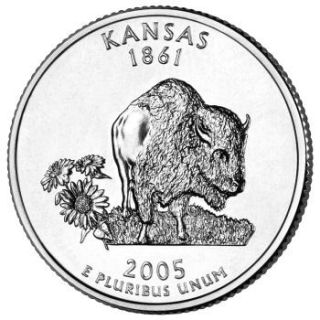
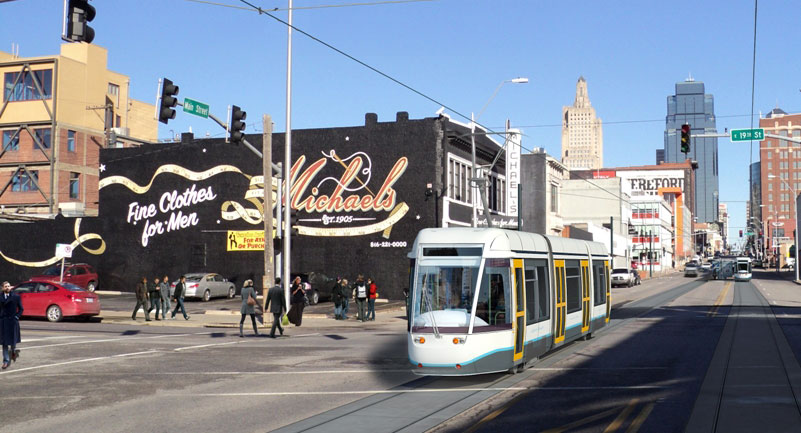


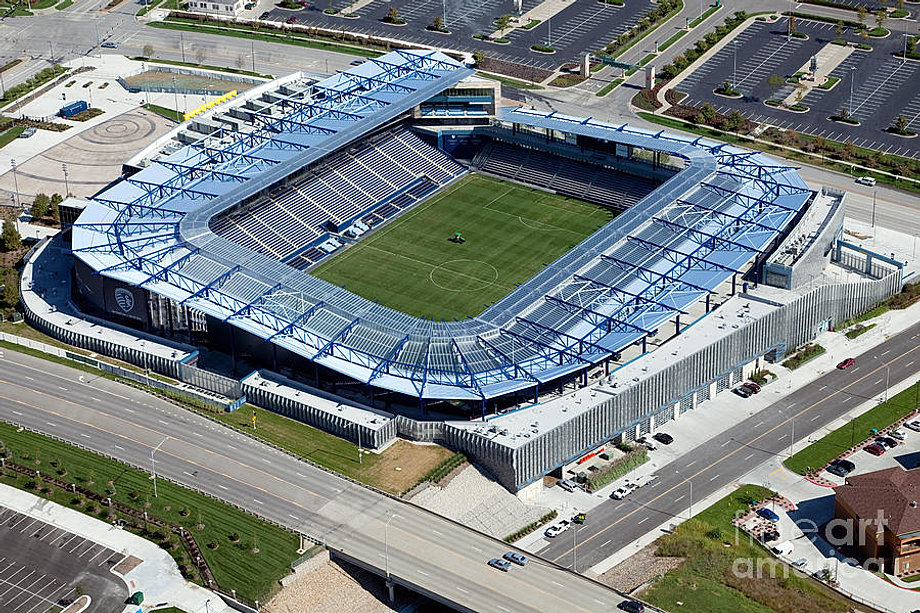



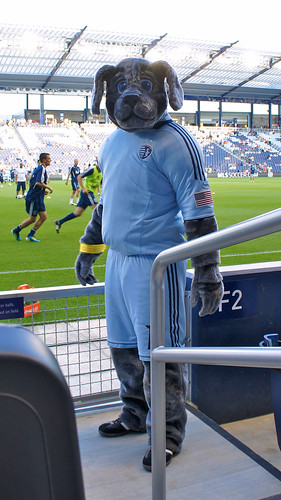


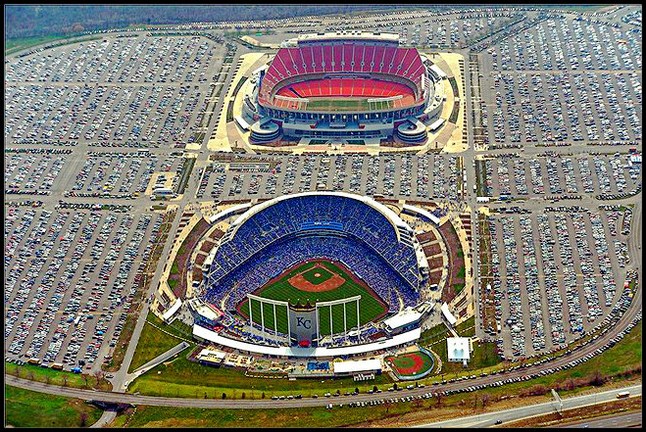
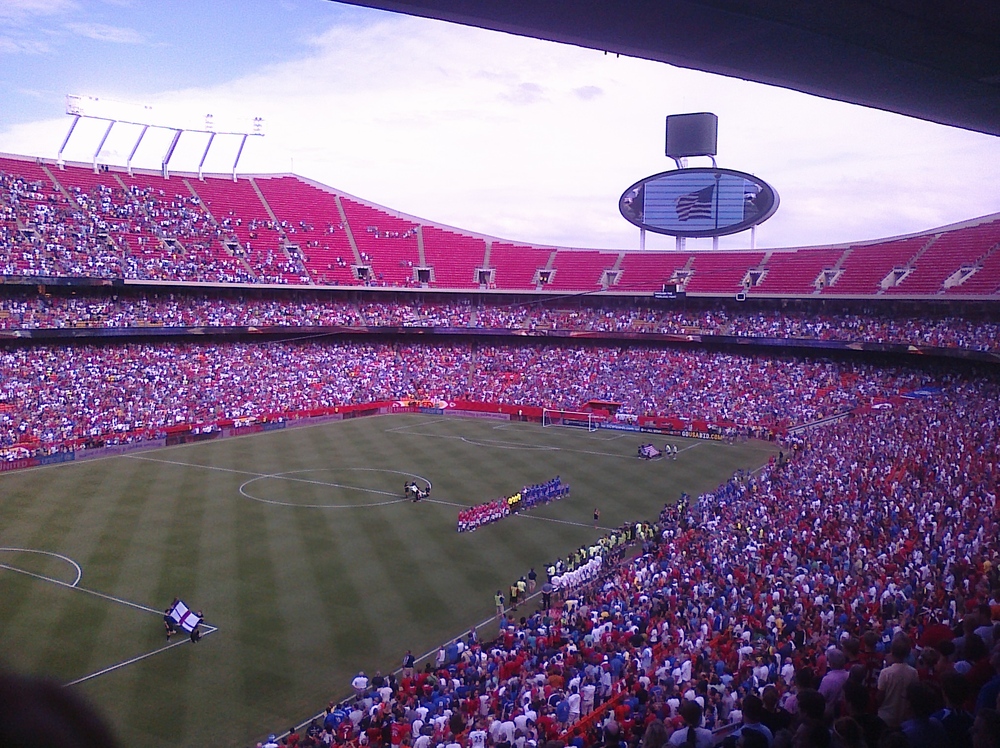

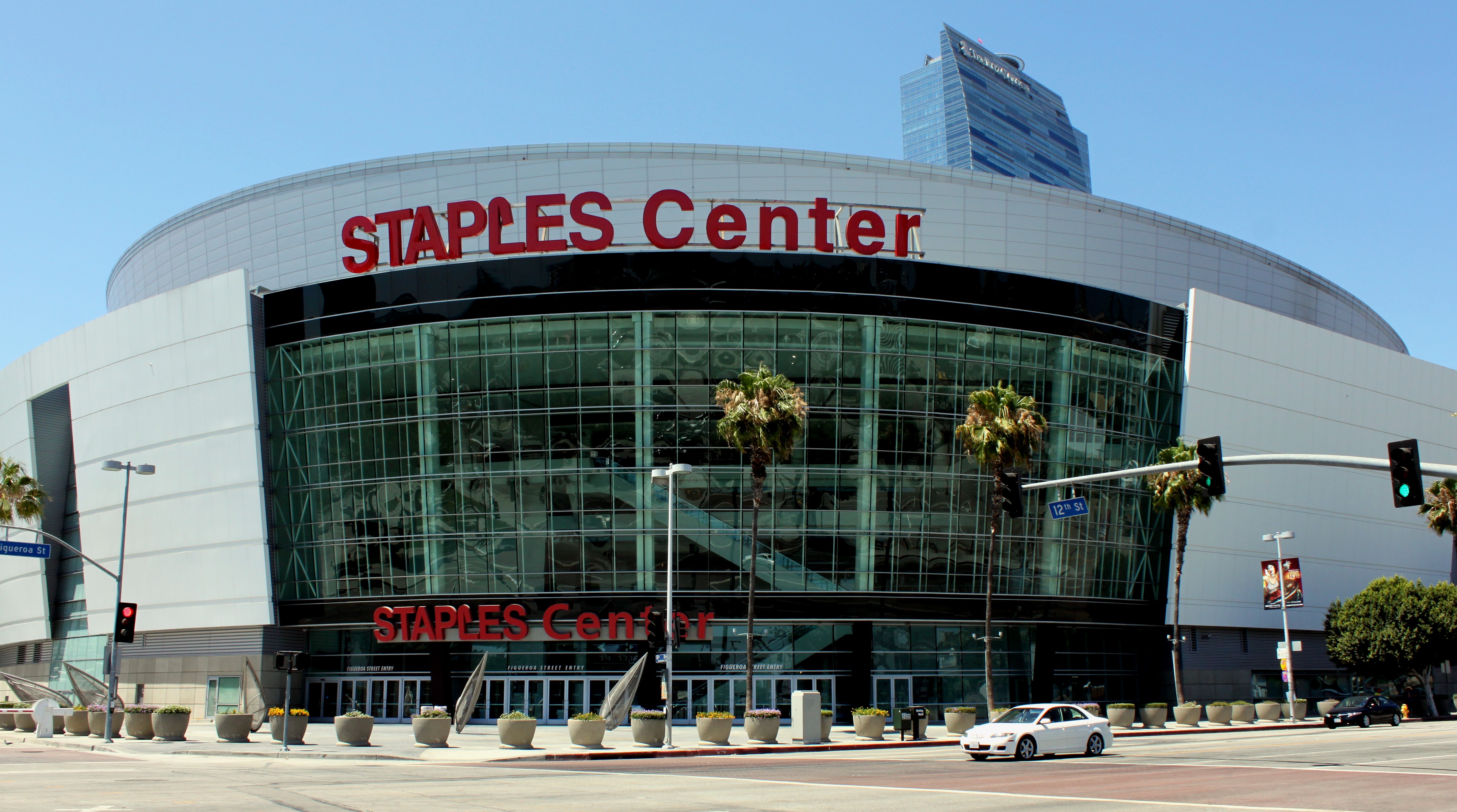
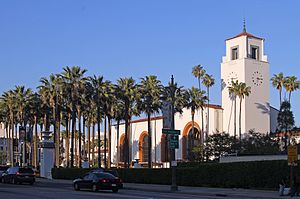
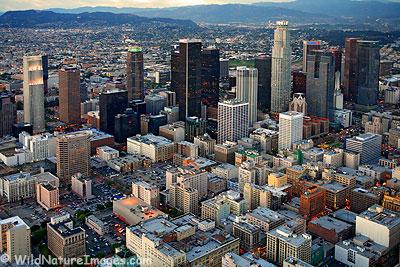




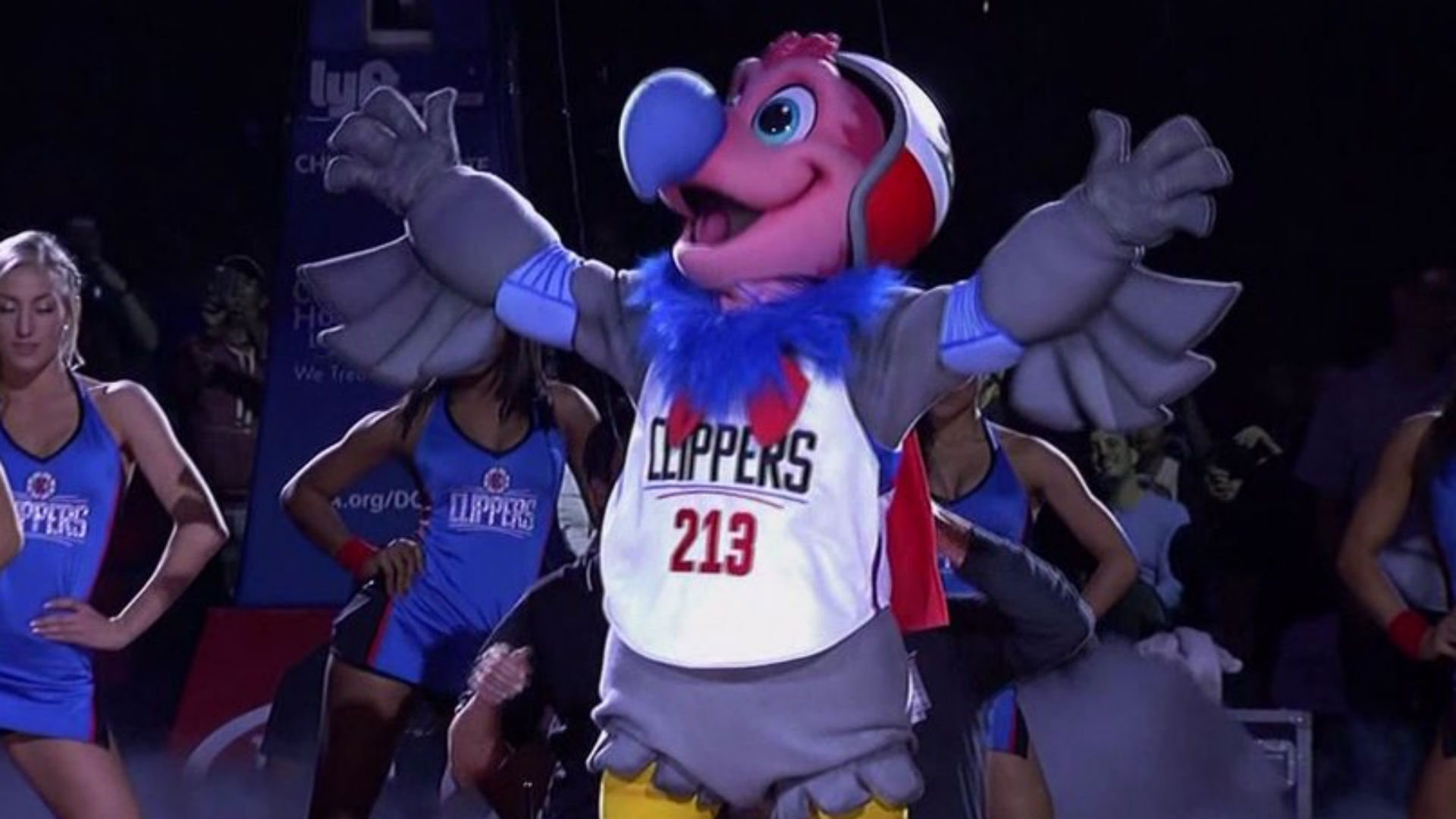

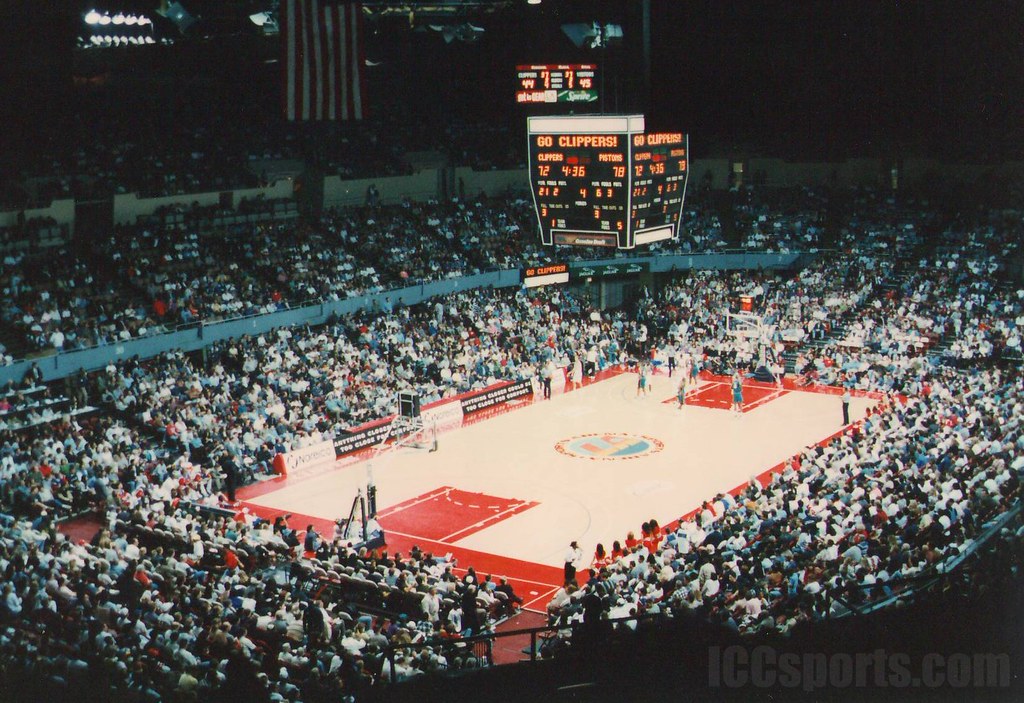
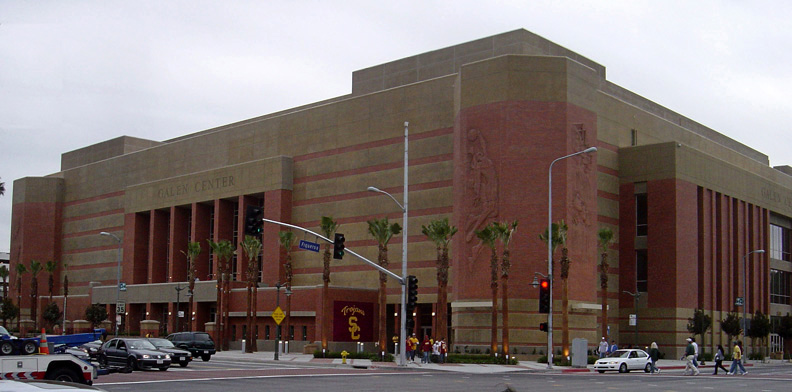
ChineseTheatre-1.jpg)
